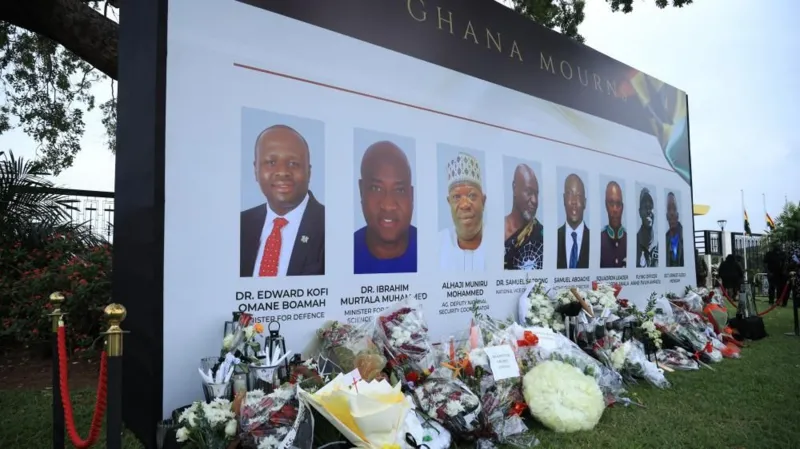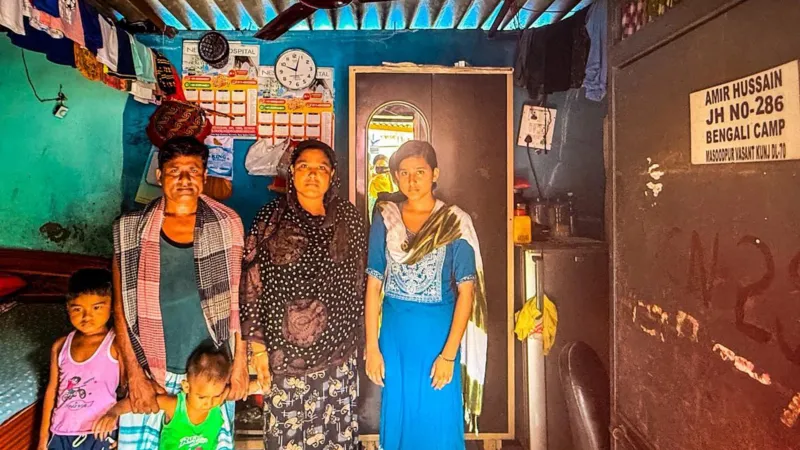How soon is too soon to visit after a disaster?
As floods, storms and wildfires intensify around the world, these are a few key questions to ask when considering travelling to a destination recovering from a natural disaster.

From raging wildfires to record-breaking storms, a swathe of natural disasters have wreaked havoc on communities around the world this summer. Experts believe that as the climate crisis intensifies, the intensity and frequency of these extreme floods, fires, hurricanes and tornadoes will only continue to increase.
Many cities are already looking for ways to mitigate the impact of climate change-induced threats, from adding more green spaces to combat urban heatwaves to investing in flood prevention technology. As these threats become more common, travellers will have to better understand not only when it's safe to visit after a disaster, but when it's sensible. Here are some important questions visitors should ask themselves before booking a trip to a recovering destination.
Is your visit contributing to the local community?
After Hurricane Maria, which devastated Puerto Rico in 2017, officials started welcoming visitors back to the island just three months after the storm. Though travellers were happy to return, many residents, who were still without power and running water, quickly found themselves resentful of tourists at a time when locals still lacked basic services.
"I think it [left] a bad taste in locals' mouths," explained Mikey Cordero, an activist and co-founder of the Defend Puerto Rico Media Collective. "You're enjoying my island, you're enjoying my community, you're enjoying what the local people built… but at the end of the day, it doesn't trickle back down to us."
While Cordero acknowledges that the situation wasn't so much the fault of the visitors themselves, he feels strongly that both government and guests should do a better job to ensure that their money actually goes towards helping the local community, especially after a disaster. This is a particularly sticky issue in the Caribbean where all-inclusive resorts and cruise ships make up much of the tourism landscape. Making a point to stay at locally run hotels, shop with local vendors and eat at locally owned restaurants can help in hard times by ensuring that your tourist dollars are going directly to the affected community rather than to large companies based elsewhere.
Are you helping or just watching?
After Hurricane Katrina tore through New Orleans in 2005, leaving almost 1,400 residents dead and countless homes demolished, a cottage industry of Katrina tours popped up around the city in the following weeks to show that devastation to visitors – a move that many locals found problematic. "There were still boats up in trees and houses sitting on top of barges," recalls Jason Bradberry, who lived in the city both pre- and post-Katrina. "It was insane."
In response to public outcry, city eventually banned tours of the Lower Ninth Ward, one of the areas most devastated by the storm. "No one wants to be cleaning out the remnants of the home that they've owned for decades or that's been in their family for generations, and have a tour bus drive by," said Kelly Schultz, senior vice president of communications for the city's tourism bureau, New Orleans & Company, whose family also lost everything in the storm.
However, the intense focus on the city after the storm did bring another type of tourist whose positive impact was deeply felt.
"Many of our visitors initially were what we call 'voluntourists', who came here because they wanted to help rebuild a church or school," Schultz explained. "We had college kids come help clean out my family's house for their spring break. Like you could be on a beach… but you chose to come gut somebody's home, which is a physically and emotionally gruelling process."
For Schultz, tourism was also an important way to help keep the city's culture alive. She points to one of the campaigns the city ran when welcoming tourists back after the storm: "Soul is Waterproof", a nod to the importance of preserving the unique music, food and practices that make the city so special, as something that also helped to bolster residents' pride after the devastation.
It's important to keep in mind the devasting impact these events have on locals and to be respectful of the people still struggling to recover. Organisations like the Red Cross, Habitat for Humanity and local churches and other community organisations often offer volunteer opportunities for both locals and visitors alike in the wake of disasters, as they did during the flooding in Kentucky in 2022, Hurricane Ida in 2021 and during the rash of tornados that tore through the Midwestern US in 2023.
Are you listening to the locals?
In 2023, wildfires burned through the island of Maui in Hawaii, leaving the historic community of Lāhainā particularly devastated. In response, the state's governor called for an evacuation of tourists as well as a temporary halt on incoming visitors, "so that resources and attention could be focused on the residents who needed it the most at that time", explained Ilihia Gionson, public affairs officer at the Hawaii Tourism Authority.
The moratorium on travel to the island lasted about a week before tourism was slowly phased back in. The key to success, however, was that the locals played a major role in the reopening. "Our Department of Health did a rapid needs assessment," Gionson said. "Just asking disaster survivors 'what is your most critical need right now?' More than a third of respondents listed either financial stability or housing stability or some combination of that. Understanding that… there were about 60,000 jobs powered by visitor spending, it was clear that we needed to recover travel demand to the island of Maui.
Officials also made sure that when visitors were allowed back on the island, they were respectful of those still struggling to restart their lives, by making devastated neighbourhoods off limits to tourists. Instead, visitors were encouraged to support the community in other ways, and though visitor numbers are still in recovery, many people rose to the challenge.
The clear communication and locals-first approach put forth by the island's leadership was reflected back by visitors. "In Maui's hour of need, the outpouring of aloha from around the world… whether it was monetary donations or offers of expertise or just prayers and good wishes. It was really heartwarming to see," said Gionson.
So how soon is to soon?
While Gionson acknowledges that there's no easy answer of when places should start welcoming visitors after a disaster, he feels there are some clear guidelines that both travellers and destinations should follow. Top of mind is honest and transparent communication about the impact of the disaster from officials and respectful behaviour to affected residents from visitors. But perhaps more important than that, is that everyone does their part to make sure that the reopening of tourism supports the community at large.
"Tourism is an important piece of any community's recovery post-disaster, but you cannot let the economic activity lead everything," he said. "You have real people who experienced the real trauma, who have different needs for their recovery. Restoring the economic activity for an area is one factor to consider, but it cannot be the only factor. You cannot let the economic recovery outpace the people recovery."
-BBC






